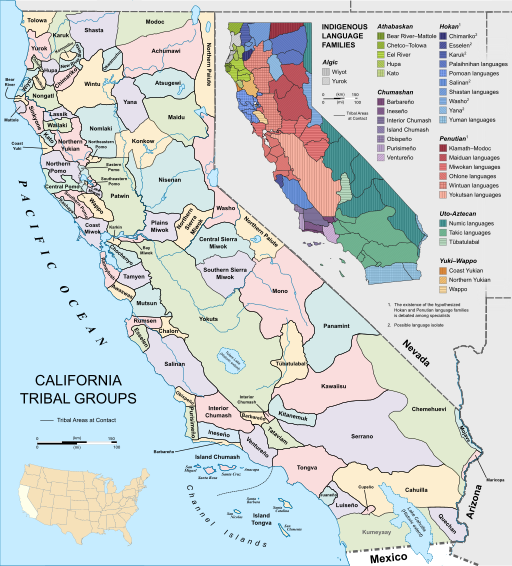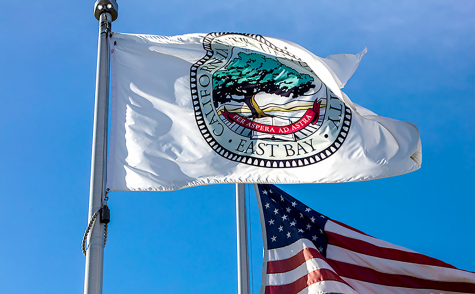EPA grants California tribes $28 million for environmental projects
The Environmental Protection Agency recently issued a grant of $28 million to California Native American tribal governments for environmental projects, the organization announced at the 24th Annual Regional Tribal Conference in San Francisco on Oct. 25.
The grant will support air and water quality monitoring, drinking water and wastewater infrastructure and cleanup of contaminated earth around California, Michele Huitric, EPA Northern California press officer, told the Pioneer. Tribes such as the Yurok in Northern California have used previous grant money this year to treat a water source that caused an E. coli outbreak in 2014.
The EPA provides annual and bi-annual grants and funds to Native American tribes for environmental improvements through a process similar to that used by states, according to Huitric. California tribes received $25 million in grant funds last year.
According to an Oct. 25 EPA news release, California tribes will receive an initial $9 million up front, to spend at their discretion. The Indian Health Service, a branch of the U.S. Department of Health and Human Services agency that provides healthcare to Native American and Alaskan Native tribes, will receive $5.1 million for wastewater and drinking water infrastructure, plant operator training and technical assistance.
The remaining $13.8 million is available to California tribes for continued improvements in environmental programs, contamination clean-up projects, air quality improvement projects and community outreach and educational programs.
Huitric said the EPA’s work with Native American tribes dates back to the 1970s under President Richard Nixon. The grant program was authorized by Congress in 1987. The EPA’s Region 9 program serves 148 federally recognized tribes and six self-governed tribes in Arizona, California and Nevada, according to Huitric.
There are 109 Native American tribes in California and 88 will receive funding from the EPA this year. Five tribes are still covered under a grant from the 2016 fiscal year and 16 California tribes don’t seek or receive any financial support from the EPA, according to Huitric.
Huitric said that significant accomplishments have been made through this funding but there are still disparities in environmental health and overall quality of life for Native American tribes.
One of the biggest concerns that the EPA seeks to address is the accessibility of safe drinking water and wastewater infrastructure. “In the United States as a whole, less than one percent of the population does not have water that is safe to drink and access to a sanitary sewer or septic system,” said Huitric. “In Indian Country, for example on the Navajo and Hopi Reservations, more than twenty percent of the population does not have these services. Some tribal residents do not even have a water tap or a toilet in their own home.”
Funding is a significant issue for many tribes, which renders them unable to invest in public works and facilities, according to Huitric. Illegal wastewater dumping is a common occurrence which has prompted the EPA to financially assist tribes to develop sustainable waste management systems.
The money comes from annual appropriations from Congress, funds that have been allocated for specific federal government departments, agencies and programs, according to Huitric. The EPA’s General Assistance Program, Clean Water Act Program, Clean Air Act Program, and Hazardous Waste Management Program are also involved in supplying the funding, according to Huitric. Sixty-seven percent of the EPA’s regional budget is allocated to a variety of grants for states, tribes and other entities; $300 million of which California is a recipient of.
The grant is valid for the 2017 fiscal year, which began on Oct. 1, 2016 and will continue through Sept. 30, 2017, according to Huitric. Tribes receive between one and a dozen grants from the EPA annually, which depend on the needs of the tribe, the complexity of the environmental program and the tribe’s ability to take on the project.
In collaboration with the EPA, tribes are required to create a scope of work plan and a budget plan to determine the end goal of the project and how it will be accomplished before the funds can be delivered, according to Huitric.
After the tribe receives the money, the EPA continues to work with the tribes to meet their objectives by providing advice and technical assistance as needed. Afterward, the EPA and tribe evaluate the progress made throughout the project.
There are environmental objectives as well as program requirements and guidelines that tribes must follow; however, Huitric said it’s up to each tribe to determine how the funds will be used.








